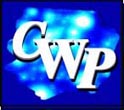Some Important Contributions:
- "Synthesis of the Elements in Stars," Rev. Mod. Phys., 29:
547 (1957), with G.R. Burbidge, W.A. Fowler, and F. Hoyle.
"Burbidge, Burbidge, Fowler, and Hoyle combined what we would now call fragmentary evidence from nuclear
physics, stellar evolution and the abundances of elements and isotopes in the solar system as well as a few stars into a
synthesis of remarkable ingenuity. Their review provided a foundation for forty years of research in all of the aspects of low
energy nuclear experiments and theory, stellar modeling over a wide range of mass and composition, and abundance studies of
many hundreds of stars, many of which have shown distinct evidence of the processes suggested by B2FH." -- See
"Synthesis of the elements in stars: forty years of progress." by G. Wallerstein, et al. Rev. Mod. Phys. 69:995 (1997).
Additional important publications chosen and annotated by Professor Burbidge.
- "The Rotation, Mass Distribution and Mass of NGC 5055," Astrophys.
J 131:243 (1960)
I was the first person to use the long-slit method
of measuring spectroscopically the rotations of galaxies (at McDonald Observatory,
then run by U. Chicago). We developed formulae for deriving the masses and
mass-to-light ratios.
- "The Masses of Galaxies", in Galaxies and the Universe, Vol IX
of Stars and Stellar Systems, U. Chicago Press, 1975, with G. Burbidge.
Collection of our results on galaxies over several
years.
- "Redshift of OQ 172" Nature 243:336 (1973), with Wampler,
Robinson, Baldwin.
Held the record for the largest QSO redshift for
many years; was listed for many years in the Guinness Book of Records.
- "Operation of the Faint Object Spectrograph," Proc. SPIE 445:410
(1984), with Harms, Beaver, et al.
I was at Goddard Space Flight Center when the first
ultraviolet spectrum of a quasar (UM 675) was obtained with the Faint Object
Spectrograph on the Hubble Space Telescope - published in Astrophys.
J. Letters,377, L1, 1991.We identified the highly ionised
element Neon VIII from a line we measured at 2417 angstroms (the rest wavelength
being 770 angstroms). Our whole team (led at that time by myself)
co-authored the paper.
My American Assoc. for the Advancement of Science
Presidential
Address, described the results from the Voyagers and the Viking Lander
on Mars, and my view of some of the dangers facing the world (environment,
nuclear proliferation, etc.).
Books
- "Quasi-Stellar Objects", San Fransisco, 1967, with G. Burbidge,
W.H.Freeman
Since I was one of the first people to measure ANY
spectroscopic dataon QSOs, including redshifts, and Geoffrey and
I put my data together with the physical analysis of the data and gathered
our work together into the 1967 book, this book remained the standard text
on quasars for some 20 years. It contains many
so-called discoveries on the nature of quasars.
- "Observations of QSOs which are Critical for Cosmology", in "The
Universe at Large: Key Issues in Astronomy and Cosmology," ed. Guido
Munch, Antonio Mampaso, Francisco Sanchez, Cambridge U. Press, 1997.
Honors:
Helen Warner Prize, American Astronomical Society with Geoffrey Burbidge
1959
Fellow, Royal Society of London 1964
Fellow, American Academy of Arts and Sciences 1970
Elected to National Academy of Sciences 1978
President, American Astronomical Society 1976-78
Bruce Medal, Astronomical Society Pacific 1982
National Medal of Science 1984 (AMWS 1992-93 states that she recieved
this award in 1985)
Russell Prize 1984
Albert Einstein World Award of Science Medal 1988
Jobs/Positions:
1946-51 Assistant Director and Acting Director, The University of London
Observatory
1954-57 Research Fellow, California Institute of Technology
1959-62 Associate Professor, University of Chicago
1962-64 Associate Professor, University of California, San Diego
1964-90 Professor, University of California, San Diego
1990 - present Professor emeritus, University of California, San
Diego
1972-73 Director, Royal Greenwich Observatory, England (on leave from
UCSD)
1979-88 Director, University of California Center for Astrophysic
and Space Sciences
Education:
B.Sc. University of London 1939
Ph.D. University of London 1943
Sources and References  consulted: consulted:
E. Margaret Burbidge, [1EE N20],
[17 MWR2], [s1974tg],
[s1981vcr], [4 AMWS]
Further reading:
 Additional Information/Comments: Additional Information/Comments:
E. Margaret Burbidge remembers introducing Vera Rubin to studies of velocity fields of galaxie
by the long-slit method in work they did together at UC San Diego in 1964.
Published work: "A study of the velocity field in M82 and its bearing
on explosive phenomena in that galaxy." E. M. Burbidge, G. R. Burbidge,
and V. C. Rubin Astrophys. J.(USA) 140: 942 (1964).
Burbidge is married to the astronomer Geoffrey R. Burbidge.
Field Editor:
Professor Ferdinand Coroniti
<coroniti@physics.ucla.edu>
|
 Welcome
to CWP at UCLA
Welcome
to CWP at UCLA  Welcome
to CWP at UCLA
Welcome
to CWP at UCLA